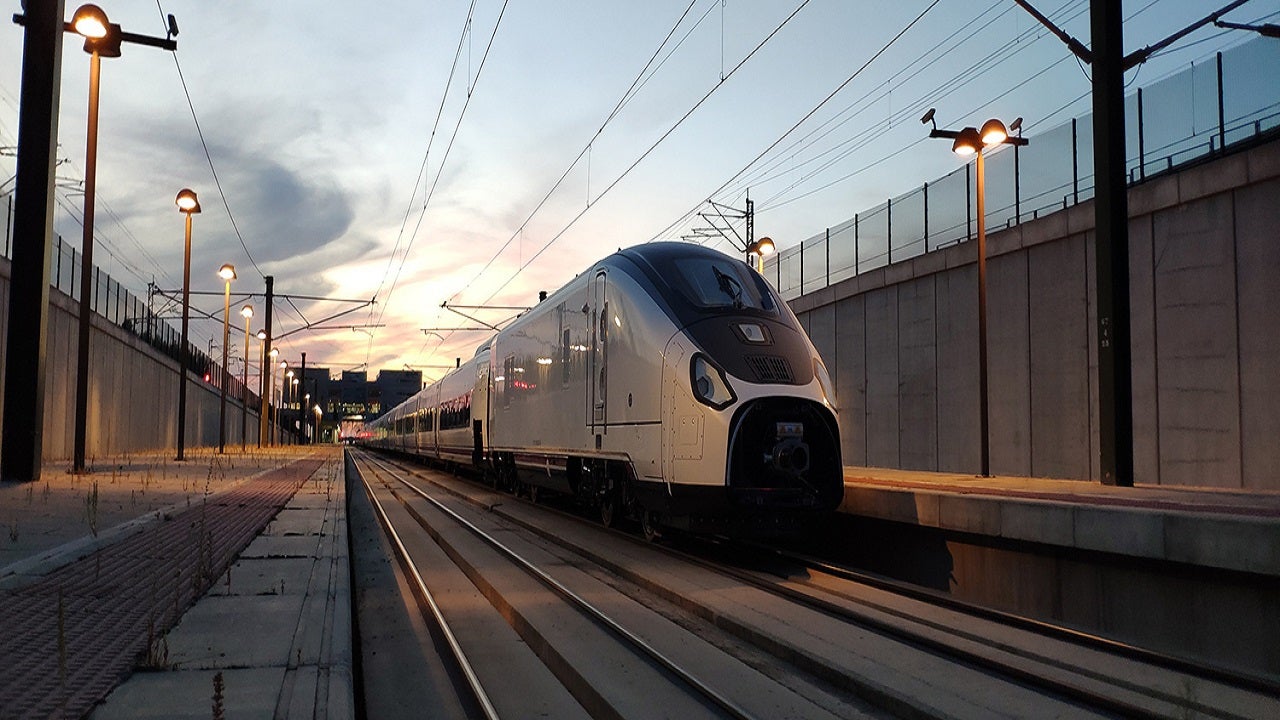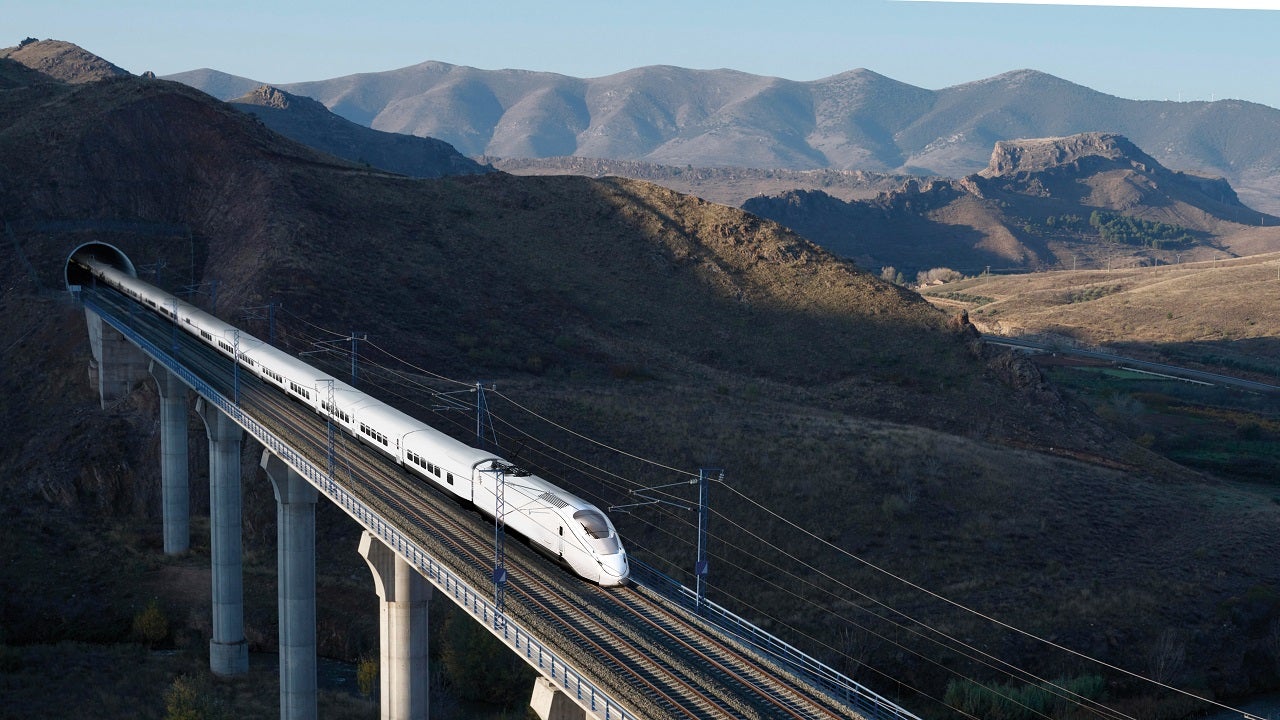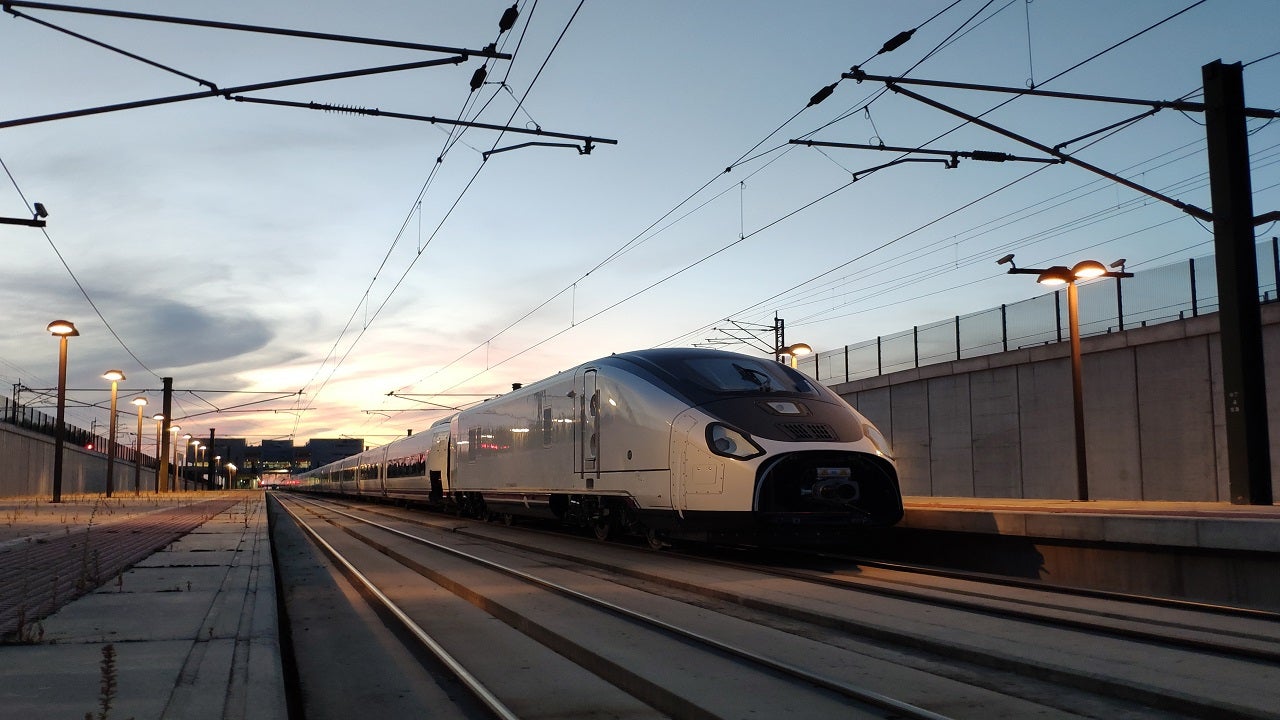Talgo Avril is being developed by Spanish passenger trains manufacturer Talgo to cater to the very high-speed rail segment. It is the company’s most advanced very high-speed train.
Dynamic testing of Talgo Avril began in February 2021, marking a key step in the technical homologation before the start of commercial operations. The homologation tests will be performed for several weeks on the Madrid-Galicia high-speed railway line in Spain to test the dynamic behaviour of all the components of the train, including the running gear systems.
The Talgo very high-speed train manufacturing is estimated to generate 1,000 jobs during the five years of production, and 100 jobs a year, on average, during the maintenance period.
Talgo Avril train design and features
The Talgo Avril is designed to fulfil the specifications of rail operators worldwide and address environmental concerns and sustainable development. The latest-generation train has 12 passenger carriages positioned on a single-deck and with the same level as that of the station platform. The configuration is expected to facilitate easy access to the train and better movement inside the train without the need for steps or ramps.
The train will operate at three different voltages – 25kV 50Hz AC, 3kV DC, and 1.5kV DC. It is also installed with European Railway Traffic Management System (ERTMS) and Spanish ASFA digital signalling systems. The new Avril trains are equipped with the French TVM signalling system for operations in France.
Incorporated with Talgo’s automatic variable-gauge technology, the very high-speed all-track trains can operate at a maximum commercial speed of 330km/h.
The lightweight design will ensure 30% reduced energy consumption and faster acceleration. The trains will also support braking with reduced stopping distance. The company expects the highly efficient Avril trains to reduce greenhouse gas emissions and enhance rail’s position as a sustainable mode of transportation.
Seating capacity and arrangement
The 201.9m-long, 3.2m-wide Avril trains offer a wide bodyshell with a high capacity of more than 600 passengers. The use of design based on short articulated vehicles provides greater passenger comfort by ensuring enough space between the seats. The innovative layout allows the addition of a fifth seat to each row in the three-plus-two configuration.
The 12-car unit trains will have three business class, eight tourist-class cars and a cafeteria car. The trains will be fitted with a traction unit at each end, with a baggage van for groups and charters.
The business-class configuration will have seats arranged in rows of two-plus-two. Each of the ergonomic, leather seats will be fitted with flat video screens on the backrests and retractable ones on the tables. Four of the tourist cars will have 49 seats each, three tourist cars with 54 seats and an end tourist car will have 58 seats. The cafeteria car will feature a special bar that will be able to accommodate people with limited mobility.
Approximately 80% of the seats will be available in the tourist-class, while the remaining 20% will be in the business-class.
Amenities inside Avril
Trains will accommodate wheelchairs in two designated spaces in a standard composition.
Equipped with panels and mobile displays, the interiors are designed to meet different functions, including a meeting room, a nursery, and an exhibition hall.
The 100% low-floor Avril trains will provide improved accessibility for people with reduced mobility, while also ensuring an easy and comfortable journey for all kinds of passengers, including parents with baby strollers and passengers with heavy luggage or bikes.
Passengers will be able to access Wi-Fi inside the train. Other features will include modern lighting, flexible seating, and spaces for baggage storage, including under seats, of up to 206l per seat.
The train will have 11 toilets, including ten standard units and a larger, accessible toilet.
Orders and deliveries of Talgo Avril
In November 2016, Renfe awarded a €787m ($844.46m) tender to Talgo for the supply and maintenance of 15 very high-speed trains for 30 years.
The scope was later extended to include the supply of 15 additional units. The trains will be able to run on the entire electrified rail network in Iberia. Out of 30 trains, 15 of them will have the capability to change the track-gauge automatically without stopping.






